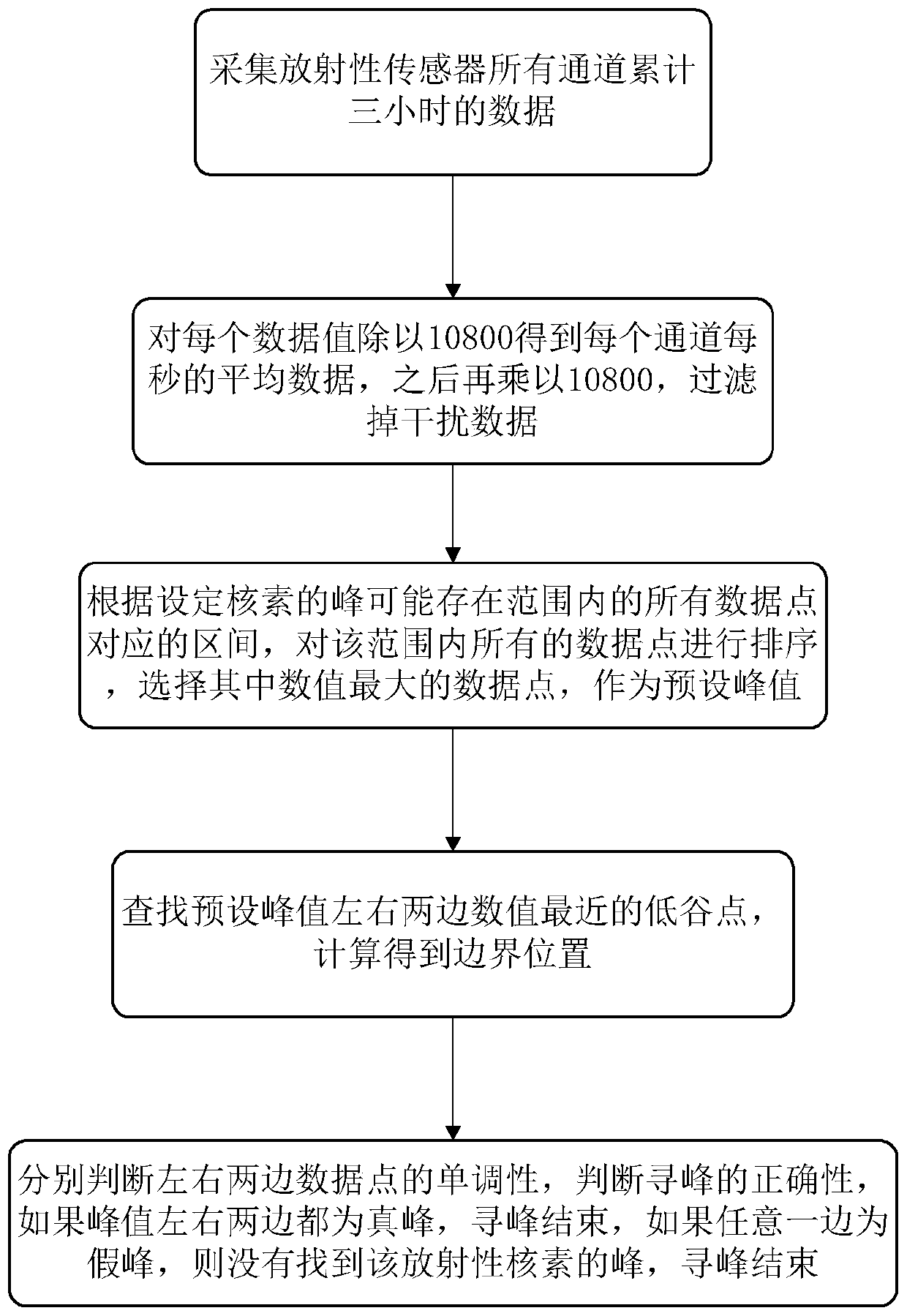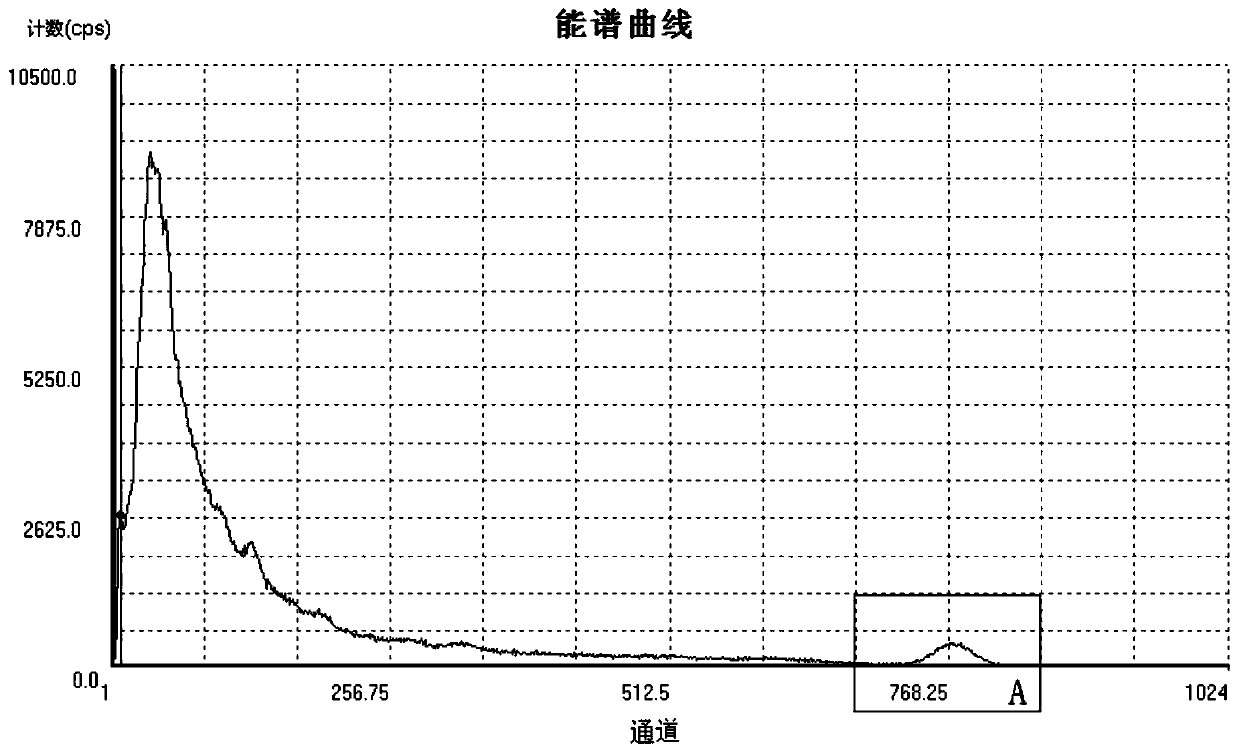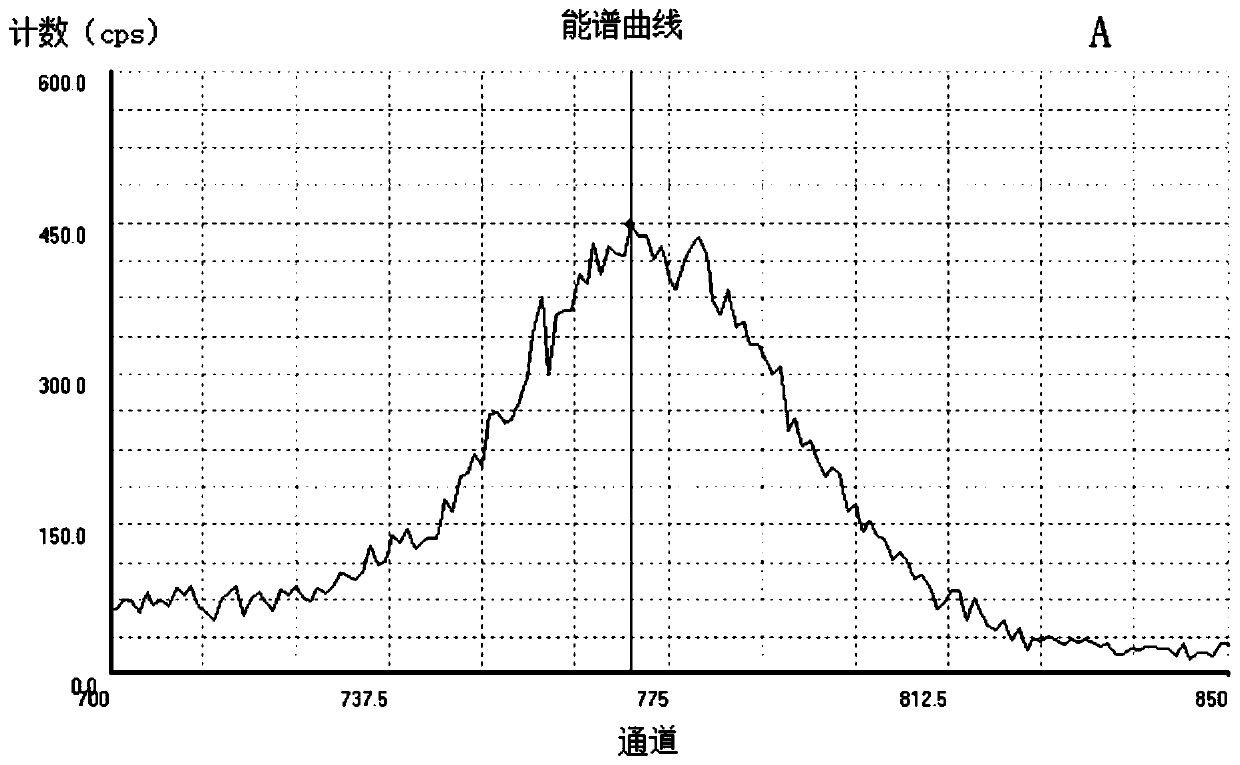A fast peak-finding method for the detection of radioactive substances in seawater
A radioactive material, seawater technology, applied in radiation measurement, X/γ/cosmic radiation measurement, measurement devices, etc., can solve the problems of voltage signal amplitude variation, many interference factors, complex and changeable marine on-site detection environment, etc. The effect of increasing credibility
- Summary
- Abstract
- Description
- Claims
- Application Information
AI Technical Summary
Problems solved by technology
Method used
Image
Examples
specific Embodiment
[0024] S101. Receive data accumulated for 3 hours from all channels of the radioactive sensor.
[0025] In this embodiment, in order to improve the resolution of the signal and to ensure that the radionuclide accumulates to a certain extent to ensure that the detection limit can be exceeded, this embodiment needs to enrich the radionuclide data for three hours.
[0026] Since various parameter settings are based on three hours of data, in order to avoid errors during the use of the algorithm, it is recommended to enrich the data of three hours from the sensor and apply this algorithm.
[0027] S102. Divide each data value by 10800 to obtain the average data per second of each channel, and then multiply by 10800 to filter out the interference data.
[0028] In this embodiment, since the data of the sensor per second is a positive integer and accumulates data for three hours, it is divided by 10800 to get the average number of each channel in three hours, and then multiplied by ...
PUM
 Login to View More
Login to View More Abstract
Description
Claims
Application Information
 Login to View More
Login to View More - R&D
- Intellectual Property
- Life Sciences
- Materials
- Tech Scout
- Unparalleled Data Quality
- Higher Quality Content
- 60% Fewer Hallucinations
Browse by: Latest US Patents, China's latest patents, Technical Efficacy Thesaurus, Application Domain, Technology Topic, Popular Technical Reports.
© 2025 PatSnap. All rights reserved.Legal|Privacy policy|Modern Slavery Act Transparency Statement|Sitemap|About US| Contact US: help@patsnap.com



